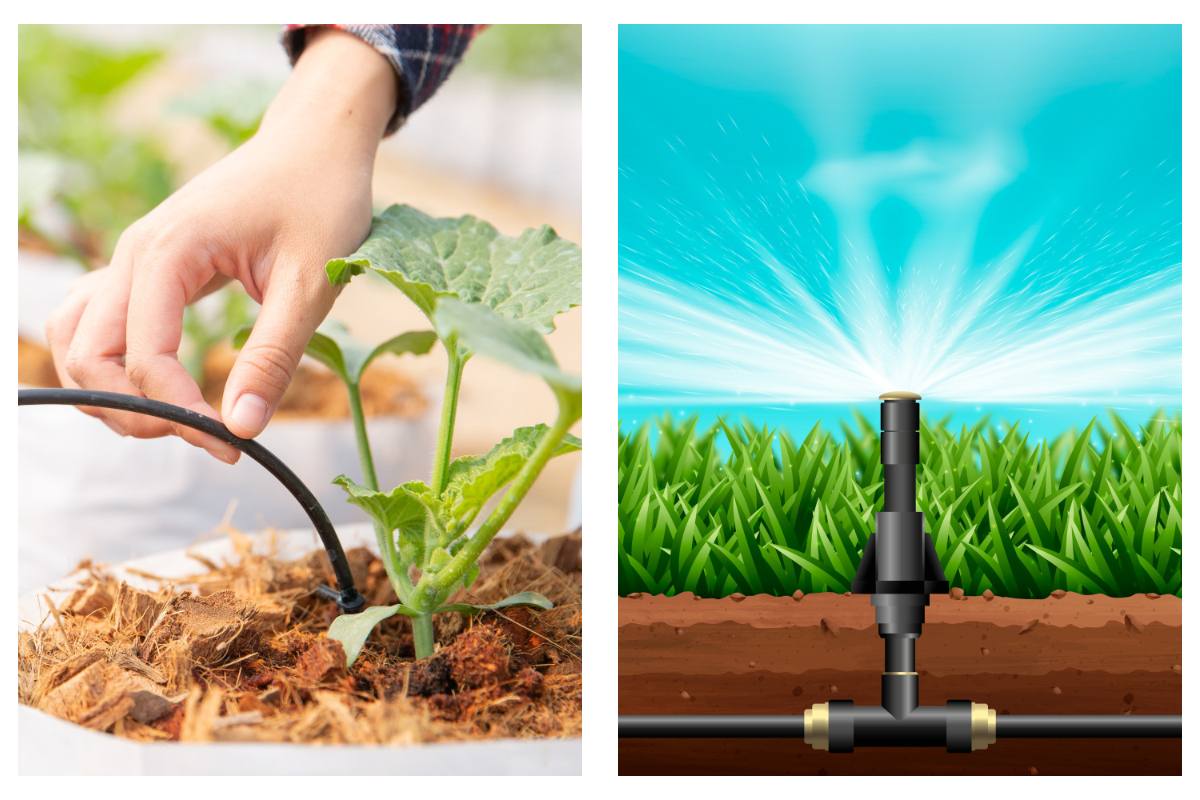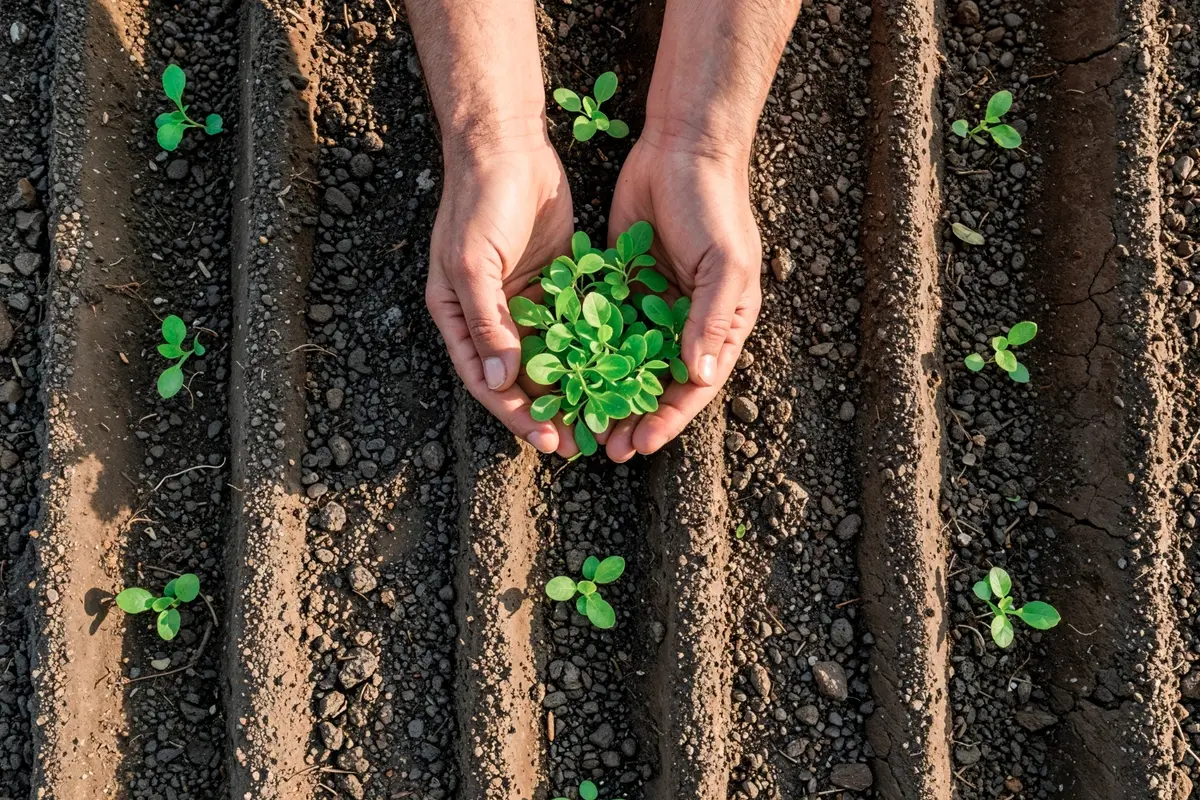Drip irrigation and sprinkler irrigation are two modern irrigation techniques designed to efficiently deliver water to crops, conserving water and improving crop yields. However, they differ significantly in their design, application, advantages, and suitability for specific crops and regions.
Drip irrigation delivers water directly to the root zone of plants through pipes and emitters, minimizing evaporation and ensuring high water efficiency. It is ideal for row crops, fruit trees, and vegetables. In contrast, sprinkler irrigation mimics rainfall by spraying water over crops using sprinklers or nozzles, making it suitable for large fields and closely spaced crops like grains and turf. In this article, we will discuss the difference between drip irrigation and sprinkler irrigation in detail.
Difference Between Drip Irrigation and Sprinkler Irrigation
| Attributes | Drip Irrigation | Sprinkler Irrigation |
| 1. Water Delivery Method | Water is delivered directly to the root zone of plants through a network of pipes, tubes, and emitters. | Water is sprayed over the crops in a manner similar to rainfall, using sprinkler heads or nozzles connected to pipes. |
| 2. Water Usage Efficiency | Highly efficient, as water is applied only where needed, minimizing evaporation and runoff. Efficiency is around 90-95%. | It is less efficient compared to drip irrigation due to higher evaporation losses and possible water drift caused by wind. Efficiency is about 70-85%. |
| 3. Coverage Area | Best suited for row crops, orchards, and individual plants where localized watering is required. | Covers a larger area uniformly, making it suitable for lawns, large fields, and areas with closely spaced crops. |
| 4. Suitability for Crops | Ideal for crops like vegetables, fruit trees, sugarcane, and vineyards, where precise water delivery is essential. | Suitable for crops like wheat, rice, maize, and other grains, as well as for turf and ornamental plants. |
| 5. Cost | The initial setup cost is higher due to the need for specialized equipment like emitters, filters, and a network of pipes. | Relatively less expensive to install, but may require higher operational costs due to energy needs for water pumps. |
| 6. Maintenance | Requires regular maintenance to prevent clogging of emitters, especially in areas with hard water or high sediment content. | Maintenance includes checking for leaks, adjusting sprinkler heads, and ensuring even water distribution. |
| 7. Soil and Water Suitability | Works well in sandy and light-textured soils where water can be absorbed quickly without significant runoff. | More effective in heavier soils where water infiltration is slower, as it allows time for absorption. |
| 8. Energy Requirements | Energy requirements are lower as water flows through pipes under low pressure. | Requires higher energy to pump water to the sprinkler heads, especially for large areas. |
Conclusion
Both drip and sprinkler irrigation systems are valuable tools in modern agriculture, each suited to specific needs and conditions. Drip irrigation is ideal for water conservation and precision farming, while sprinkler irrigation is better for covering large areas and crops that require uniform watering. The choice between the two depends on factors like crop type, soil conditions, available resources, and climate.







